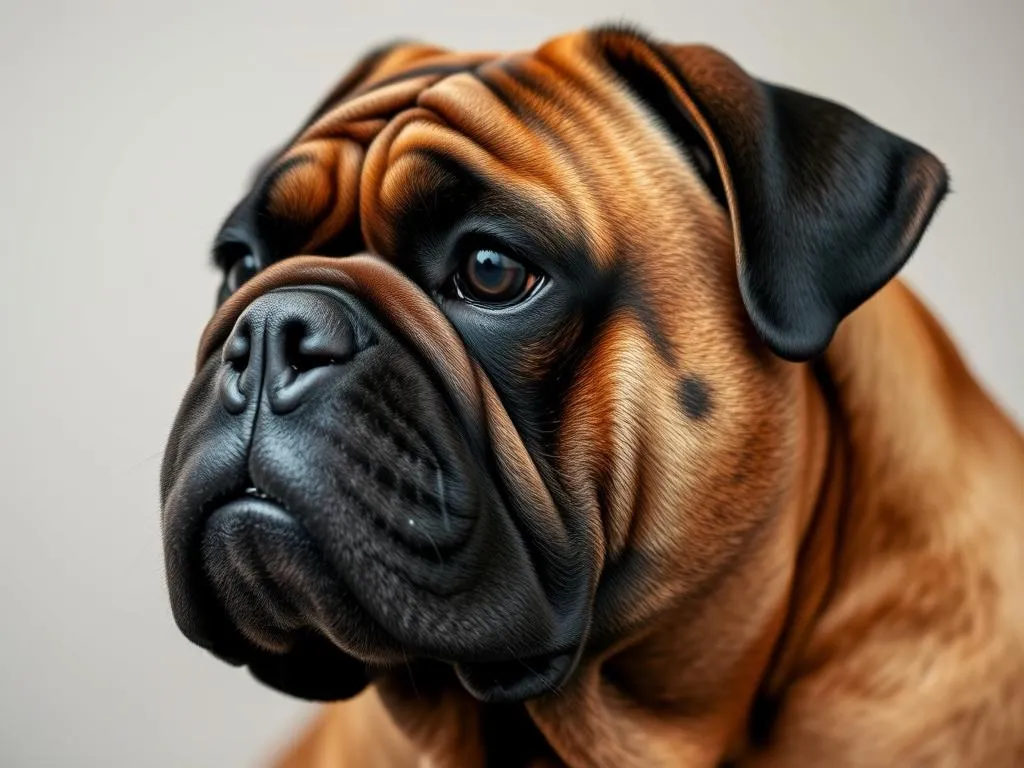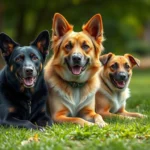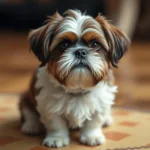
The Bullmastiff is a majestic breed, known for its strength, loyalty, and gentle demeanor. Initially bred as a guard dog in England during the 19th century, the Bullmastiff’s impressive stature and keen instincts made it an ideal protector of estates. Understanding the Bullmastiff colors and patterns is not just about aesthetics; it plays a crucial role in breed identification and appreciation. This guide delves into the captivating world of Bullmastiff colors and patterns, exploring the various hues, designs, and the science behind them.
Understanding the Bullmastiff Breed
History of Bullmastiffs
The origins of the Bullmastiff date back to the mid-1800s, where its lineage is a blend of the Bulldog and the Mastiff. Developed to accompany gamekeepers in their efforts to control poaching, the breed was designed for both strength and speed. Their physical characteristics were honed to create a dog that could tackle intruders while remaining gentle with family members. Over the years, Bullmastiffs have transitioned from working dogs to beloved family pets, retaining their protective instincts and loyalty.
Physical Characteristics
Bullmastiffs are large and powerful dogs, typically weighing between 100 to 130 pounds. They possess a broad head with a short muzzle, giving them an imposing appearance. Their muscular build, along with a deep chest and strong legs, allows them to be agile despite their size. The combination of these physical traits contributes to their overall appeal and functionality as both a companion and a protector.
Bullmastiff Coat Colors
Common Colors
One of the fascinating aspects of Bullmastiffs is their variety of coat colors. The most common shades include:
-
Fawn: This beautiful color ranges from a light tan to a deeper golden hue. Fawn Bullmastiffs often have a striking appearance, particularly when they have a rich, warm shade. The color can vary significantly, which adds to the breed’s charm.
-
Brindle: A brindle coat features a unique pattern of dark stripes on a lighter background, typically fawn or yellow. The contrast creates a visually arresting appearance, and the patterns can vary widely among individual dogs.
-
Red: Red Bullmastiffs display a rich, deep color, often compared to the fawn and brindle variations. This shade is vibrant and can sometimes appear almost mahogany, making it a stunning choice for those seeking a bold look.
Rare Colors
While the standard colors are more common, certain shades are considered rare among Bullmastiffs:
-
Black: The black Bullmastiff is a striking sight, though it is not officially recognized in many breed standards. The rarity of this color often leads to misconceptions about its acceptability in the breed.
-
Blue: Another rare color is blue, which results from specific genetic variations. This color can appear as a steel blue or slate, creating an eye-catching look that stands out among the typical hues.
-
Other colors: Occasionally, Bullmastiffs may exhibit other colors, such as chocolate or even silver. However, these are generally not recognized by breed standards and can lead to disputes regarding their legitimacy.
Bullmastiff Patterns
Solid vs. Patterned Coats
Bullmastiffs can either have solid coats or feature intricate patterns. A solid coat is uniform in color without any markings, while patterned coats include variations like brindle or masked designs. The choice between a solid or patterned Bullmastiff often boils down to personal preference, as both types exhibit the breed’s characteristic strength and loyalty.
Common Patterns
-
Brindle Pattern: The brindle pattern is among the most recognized in Bullmastiffs. This pattern consists of dark stripes overlaid on a lighter coat, creating a unique and mesmerizing look. Brindle Bullmastiffs can vary significantly, with some featuring more pronounced stripes than others.
-
Masked Patterns: Bullmastiffs may also display facial masks, which are darker areas around the eyes and muzzle. These masks can vary in intensity and shape, influenced by genetics. Masks can enhance the dog’s expression, giving them a more distinctive and memorable appearance.
Unique Patterns
- Merle and Other Variations: While not commonly associated with Bullmastiffs, the merle pattern features a mottled coat with patches of color. This pattern is rare and often not recognized in breed standards, raising questions about its acceptance among enthusiasts.
Genetics Behind Bullmastiff Colors and Patterns
Color Inheritance
The genetics of Bullmastiff colors and patterns is a complex subject. Coat color in dogs is determined by a combination of dominant and recessive genes. For example, the genes responsible for the fawn and brindle colors are dominant, while rarer colors like blue or black tend to be recessive. Understanding these genetic principles helps breeders make informed decisions when planning matings.
Influence of Breeding
Breeders play a significant role in determining the outcome of a Bullmastiff’s color and pattern. Responsible breeding practices focus on maintaining the breed’s integrity while also considering the aesthetic preferences of prospective owners. Breeders often aim for specific colors and patterns, but ethical considerations should always take precedence to ensure the health and well-being of the dogs.
Care Considerations for Bullmastiffs Based on Color and Pattern
Grooming Needs
Regardless of color or pattern, Bullmastiffs require regular grooming to maintain a healthy coat. Grooming needs can vary slightly based on coat types:
-
Short-haired Bullmastiffs: These dogs benefit from weekly brushing to remove loose hair and dirt. A rubber curry brush can be particularly effective for keeping their coat healthy.
-
Brindle Bullmastiffs: Special attention should be given to the brindle pattern, as the stripes can sometimes trap dirt. Regular grooming ensures that the coat remains clean and vibrant.
Health Considerations
Certain colors or patterns may be associated with specific health concerns. For instance, some studies suggest that dogs with rare colors, like blue, might be more prone to skin issues due to their unique pigmentation. Regular health checks and a well-balanced diet can help mitigate potential health risks, regardless of the dog’s color.
Choosing the Right Bullmastiff Color/Pattern for You
Personal Preferences
When selecting a Bullmastiff, personal preferences should be carefully considered. Factors such as aesthetic appeal, coat color, and pattern should align with the owner’s lifestyle and preferences. While the dog’s appearance is important, temperament and compatibility with family members are equally crucial.
Understanding Breed Standards
Familiarizing oneself with breed standards can provide valuable insight into which colors and patterns are acceptable within the Bullmastiff community. Selecting from reputable breeders who adhere to these standards ensures that prospective owners receive a dog that not only meets their aesthetic desires but also upholds the integrity of the breed.
Conclusion
The world of Bullmastiff colors and patterns is as rich and diverse as the breed itself. Understanding these aspects enriches the experience of owning a Bullmastiff, from choosing the right color to appreciating the unique beauty of each dog. Responsible ownership and breeding practices are essential in maintaining the health and well-being of this magnificent breed. As prospective owners explore their options, considering colors and patterns will undoubtedly enhance their journey with a Bullmastiff.
FAQs
What colors can Bullmastiffs be?
Bullmastiffs can be fawn, brindle, and red, with rare colors including black and blue.
Are brindle Bullmastiffs more common than fawn?
Both brindle and fawn are common, but fawn is often more prevalent.
Do colors affect Bullmastiff health?
Certain rare colors may be associated with specific health issues, but overall, a dog’s health is influenced more by genetics and care than color.
Can Bullmastiffs have unique patterns?
Yes, while brindle and masked patterns are common, variations like merle are rare and often not recognized by breed standards.









